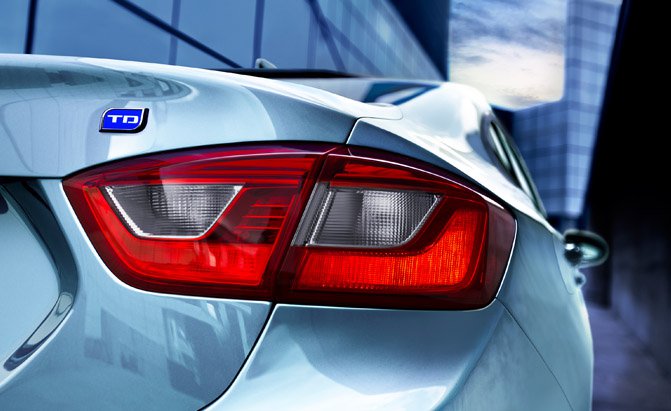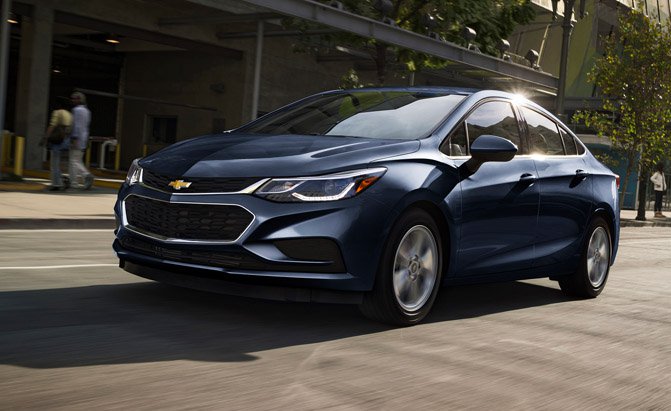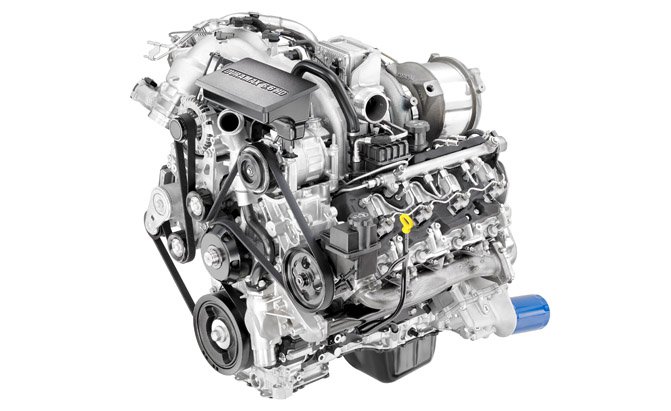The 2017 Chevrolet Cruze Diesel sedan is expected to deliver 52 miles per gallon on the highway. According to GM, this makes it the most efficient non-hybrid, non-electric vehicle in America.
“We had very aggressive goals for our fuel economy because it’s so important for this product,” said Michael Siegrist, the assistant chief engineer of this fuel-sipping small car’s new 1.6-liter engine; he’s also in charge of all GM compression-ignition passenger car powerplants in North America. If you want to learn about this oil-burning Chevy’s secrets, there’s probably no one who knows more.
Aside from the eye-catching “52” that should appear on its window sticker, this sedan will be no slouch around town, either, with an expected score of 30 mpg in urban driving. Combined, it ought to average 37. Canadian figures, meanwhile, peg the Cruze Diesel at 7.7 L/100 km in the city and an impressive 4.5 L/100 km on the highway. Combined consumption averages out to 6.3 L/100 km.
Curiously, this car achieves those figures when equipped with a six-speed manual transmission. Today’s advanced automatic gearboxes are often more efficient than their three-pedal counterparts, but the Cruze Diesel bucks this trend. Siegrist said this is because the manual is “locked up solid all the time.”
SEE ALSO: 2017 Chevrolet Cruze Hatchback Review
Making this car’s projected efficiency scores even more impressive is the engine’s output. Horsepower clocks in at a middling 137, but peak torque measures 240 pound-feet at just 2,000 rpm. A variable-nozzle turbocharger enhances this 1.6-liter unit’s responsiveness at all operating speeds, providing up to 42 psi of boost. A lightweight aluminum block and cylinder head keep mass in check. Curiously, the compression ratio is just 16-to-1, a lower-than-expected figure that’s supposed to help reduce the production of nasty smog-forming pollutants, specifically oxides of nitrogen.
Not surprisingly, there was no silver bullet, no singular advancement that helped engineers deliver the Cruze Diesel’s impressive efficiency figures. “There’s a lot of little things about the engine design that adds to this,” explained Siegrist.
One of its biggest economy enhancers is a variable-displacement oil pump, which offers two different flow rates. In low-load driving, such as steady-state cruising on the highway, it provides less volume, saving energy. When a driver demands extra oomph, the pump seamlessly delivers a greater flow of lubricant. Siegrist said even the piston-cooling oil jets can be shut off when not needed, saving more fuel.
Another way engineers improved this 1.6-liter engine’s efficiency is by optimizing how it burns diesel. “We inject up to 10 times per combustion event,” Siegrist said, a strategy that’s part of a “very, very complex” fuel-delivery system with injectors that operate at a whopping 29,000 psi.
Aside from improving fuel economy, this multi-injection approach provides another real-world benefit: a major reduction in noise. “It’s a huge part of making it quieter,” said Siegrist. Older diesel engines are typically quite raucous because each cylinder’s fuel is delivered in one big squirt, which creates a similarly loud bang. By metering the delivery in a more controlled manner, noise can be greatly reduced.
“Compared to our previous 2.0-liter Cruze Diesels, we’re up to a 68 percent lower sound-power level,” Siegrist said, which is a major reduction and something that hasn’t gone unnoticed. In Europe, this engine has been nicknamed “the whisper diesel” because of its quiet operation.
ALSO SEE: Company Claims it Has Invented the ‘Ultimate Engine’
But an advanced oil pump and cutting-edge fuel-delivery system aren’t the only things that helped this Cruze deliver enviable efficiency figures. “I would be remiss to not give our vehicle colleagues credit for this,” noted Siegrist. “The vehicle is very slippery and very light.”
Eco-friendly tires, sleek aerodynamics, active grille shutters and even a wind-cheating belly pan all cut consumption. Siegrist likened the Cruze’s development to a three-legged stool. The engine, transmission and vehicle teams all played critical roles in delivering that 52 mpg figure, working closely together to achieve it.
But that score is only a government estimate. Siegrist said customers will likely beat it in real-world driving. He added, “[Diesel is] the most efficient internal-combustion engine that exists today.” This is because compared to their spark-ignition counterparts, they burn a more energy-dense fuel, have higher compression ratios and suffer minimal pumping losses since they don’t need throttles.
In recent months, the diesel’s reputation has been tarnished by Volkswagen’s under-hood monkeyshines, but Siegrist assured us the Cruze will follow the letter of the law. “It absolutely meets emissions. We are dedicated to compliance in all aspects of the regulations.”
SEE ALSO: What is Diesel Exhaust Fluid?
Like other diesels, the Cruze has a selective catalyst reduction (SCR) emissions control system. This technology injects a urea-based fluid into the exhaust stream, which helps eliminate harmful pollutants. Curiously, this technology was borrowed from the highly regarded 6.6-liter diesel used in GM’s heavy-duty pickup trucks. Siegrist said, “You wouldn’t believe how many details transferred from the Duramax to the Cruze,” which should mean good things for customers.
Production of the 2017 Chevrolet Cruze Diesel is ramping up right now. To date, fewer than 200 of these efficient small sedans have been built, but they should start arriving at dealerships shortly. Base price is a little less than $25,000, a figure that includes destination charges. Look for the hatchback version to come out in the 2018 model year.











